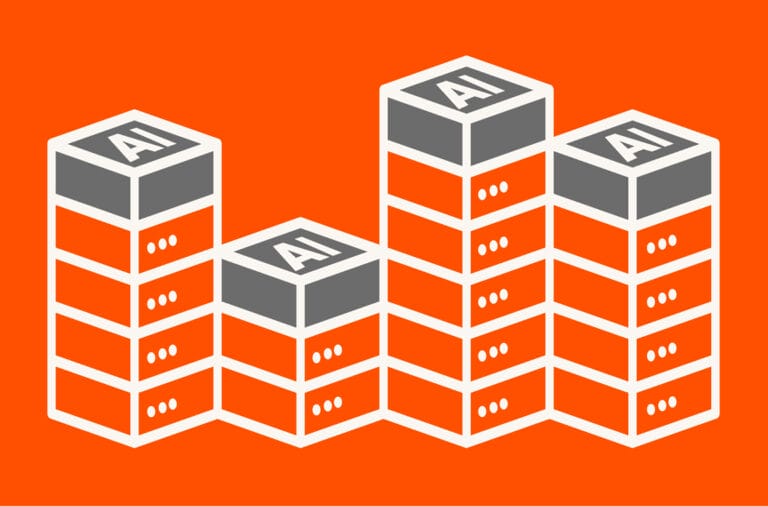Graphics processing units (GPUs) are the undisputed workhorses of AI projects. And as AI spending in enterprises is continuing to increase, enterprises are in an arms race to acquire them, which is proving hard to do during this GPU shortage. At Nvidia GTC this year, the GPU powerhouse announced a new superchip, indicating there’s more processing power (and more demand) to come.
It’s driving both stock market prices and supply chain shortages in the midst of an AI frenzy, which begs the question: What can enterprises do to maximize the GPUs they do have?
Turns out, there’s so much more to the API stack than GPUs alone—some of which could reduce (or improve) the efficiency of precious GPU resources.
How Do GPUs Power AI Projects?
Originally designed for rendering images and graphics, GPUs have found a natural home in AI applications. This is due to their parallel processing capabilities, which allow them to handle multiple tasks simultaneously and enable the rapid parallel computations required for complex machine learning tasks.
In AI projects such as generative AI, GPUs excel at performing the intricate calculations required by deep learning algorithms. Tasks like training deep neural networks, which involve processing massive data sets and optimizing complex model architectures, require immense computational power. GPUs accelerate these computations significantly, reducing the time it takes to train models from weeks to mere hours.
The AI Data Conundrum and How Data Storage Can Help
GPUs are only part of the stack required by industries deploying AI projects, such as those leveraging generative AI. While GPUs provide the computational muscle, they’re only as fast or productive as the data they process.
This is where a highly performant, best-in-class data storage platform for AI comes into play.
A data storage platform that unifies data into a single pool is essential to ensure that data is accessible, manageable, and processed seamlessly by GPUs. Data needs to be fed to GPUs at high speeds to prevent computational bottlenecks, and this requires a flash storage solution that can keep up with the pace of AI workloads.
For LLM applications, retrieval augmented generation (RAG)—like the joint RAG solution offered by Pure Storage and NVIDIA—is offering a next level of optimization, availability, and speed.
Modern Storage Can Help Maximize the GPUs You Do Have
In this challenging landscape, organizations are compelled to optimize the utilization and performance of existing GPUs to achieve their AI goals—and data storage can help.
Performance enhancement isn’t solely about upgrading GPU hardware. Storage infrastructure plays a pivotal role. High efficiency, high-speed, low-latency storage solutions ensure that data can be delivered to GPUs without delay, preventing them from idling while waiting for information.
And, freeing up data previously trapped on inefficient disk-based solutions on performant flash storage at a comparable price addresses the question of volume—something organizations are now struggling to address.
A Success Story: Chungbuk Technopark
One example of how the right storage can amplify GPU potential is the case of Chungbuk Technopark, a regional innovation hub that supports economic growth in Chungcheongbuk-do province of South Korea. Facing resource constraints due to the GPU shortage, Chungbuk turned to Pure Storage for a high-performance storage infrastructure.
With this new infrastructure, Chungbuk achieved faster data access times for its AI workloads. This resulted in improved GPU utilization and accelerated model training times, ultimately enabling the organization to achieve its AI objectives and a twofold increase in storage data processing for faster AI performance.
The Future of AI Success and GPU + Flash
As AI projects scale and become more sophisticated, the demand for computational power and efficient storage capacity will go hand in hand—especially as AI projects demand more energy for power-hungry GPUs. Organizations that invest in robust and efficient storage optimized for AI will be better equipped to handle these demands in their data centers, without bumping up against power constraints along the way.
Recognizing the tightly intertwined relationship between storage and GPUs in AI projects, Pure Storage has partnered with NVIDIA over the years, a leading provider of GPUs and AI computing solutions. This partnership delivers seamless integration between Pure Storage’s high-performance storage solutions and NVIDIA’s powerful GPUs.
AI Ready Infrastructure (AIRI) combines the latest AI compute, networking, storage and software components from Pure Storage and NVIDIA in a tested and validated reference architecture to accelerate deployment and reduce risk when compared to alternatives. With features like high throughput, low latency, and non-disruptive scalability, it’s tailor-made to complement GPU-driven AI projects.
Explore more from NVIDIA and Pure: Optimize GenAI Apps with Retrieval-augmented Generation from Pure Storage and NVIDIA and Pure’s OVX Certification announcement.






